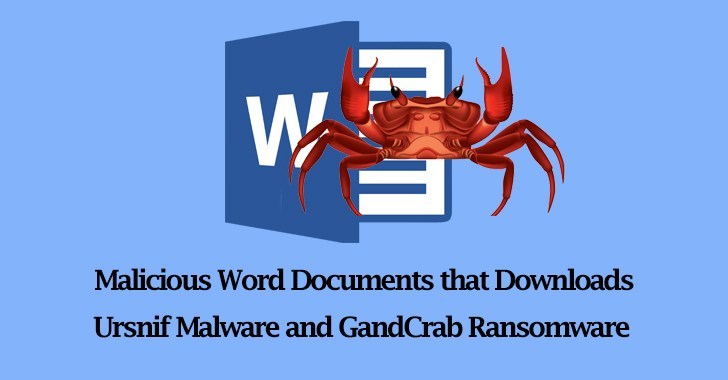A new phishing email campaign contained a malicious word document with macros downloads and executes Ursnif malware and GandCrab ransomware.
Security researchers from Carbon Black observed the campaign in wild and roughly 180 variants detected.
The first stage of attack starts in delivering of weaponized MS word document to deliver the initial stages, according to metadata it appears the documents prepared on December 17, 2018, and continues up to January 21, 2019. Documents found embedded with VBS macros that contain 18 lines of VBScript.

The Second stage starts with the execution of PowerShell script that creates a web client instances and looks for DownloadString to communicate with C2 server and stores the data in the
The attack if successful delivers multiple payloads in the infected machine, “the overall attack leverages several different approaches, which are popular techniques amongst red teamers, espionage focused adversaries, and large scale criminal campaigns,” reads Carbon Black analysis report.
GandCrab Ransomware
The first payload downloaded via the DownloadString method analyzes the system architecture of the compromised system and downloads additional payload from
The Gandcrab Ransomware is a widespread Ransomware, nowadays it evolves with newly updated futures under constant development to target various countries.
Ursnif Malware
The second payload is the Ursnif executable which harvest the system information, once executed it performs credential harvesting, gathering system and process information, and deploying additional malware samples.
Researchers observed more than 120 different Ursnif variants were hosted and the file name
“While researching this campaign approximately 180 variants were located in the wild. Using the VirusTotal Graph functionality these variants could be organized into several groups that were commonly associated by either metadata or document structures.”










